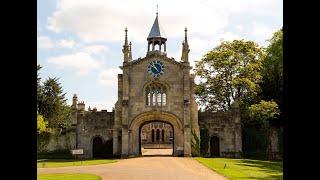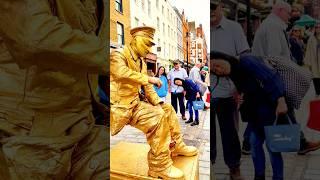COMING SOON - The Lea River Walk END TO END 9 EPISODES EVERY WEDNESDAY FROM 6/12/23
Описание
The River Lea (/ˈliː/ LEE) is in the East of England and Greater London. It originates in Bedfordshire, in the Chiltern Hills, and flows southeast through Hertfordshire, along the Essex border and into Greater London, to meet the River Thames at Bow Creek. It is one of the largest rivers in London and the easternmost major tributary of the Thames.
The river's significance as a major east–west barrier and boundary has tended to obscure its importance as north–south trade route. Below Hertford the river has since medieval times had alterations made to make it more navigable for boats between the Thames and eastern Hertfordshire and Essex, known as the Lee Navigation. This stimulated much industry along its banks. The navigable River Stort, the main tributary, joins it at Hoddesdon.
While the lower Lea remains somewhat polluted, its upper stretch and tributaries, classified as chalk streams, are a major source of drinking water for London. An artificial waterway known as the New River, opened in 1613, abstracts clean water away from the upper stretch of the river near Hertford for drinking, and lower parts of the river are also abstracted from. The Lea's origin in the Chilterns contributes to the extreme hardness (high mineral content) of London tap water.[2]
In the Roman era, Old Ford, as the name suggests, was the ancient, most downstream, crossing point of the River Lea. This was part of a pre-Roman route that followed the modern Oxford Street, Old Street, through Bethnal Green to Old Ford and thence across a causeway through the marshes, known as Wanstead Slip (now in Leyton). The route then continued through Essex to Colchester. At this time, the Lea was a wider river, and the tidal estuary stretched as far as Hackney Wick.[11] Evidence of a late Roman settlement at Old Ford, dating from the 4th and 5th centuries, has been found.
In 1110, Matilda, wife of Henry I, reputedly took a tumble at the ford, on her way to Barking Abbey and ordered a distinctively bow-shaped, three-arched, bridge to be built over the River Lea (The like of which had not been seen before), at Bow, the first bridge over the lower Lea. The lower Lea was at that time a wide, tidal and unchannelised river, so the construction of the bridge allowed a far greater degree of social and economic integration between Essex on one side, and Middlesex (including the City of London) on the other, than had been possible before.
Lea Bridge, the second bridge over the lower Lea was built after 1757, to replace the pre-existing ferry.[12] It connected Clapton to the west, and Leyton and Walthamstow to the east. The Iron Bridge carrying the Barking Road over the river to Canning Town was built in 1810. There are significantly more crossings over the more central Lower Lea, than there are over the Middle Lea.[13]










